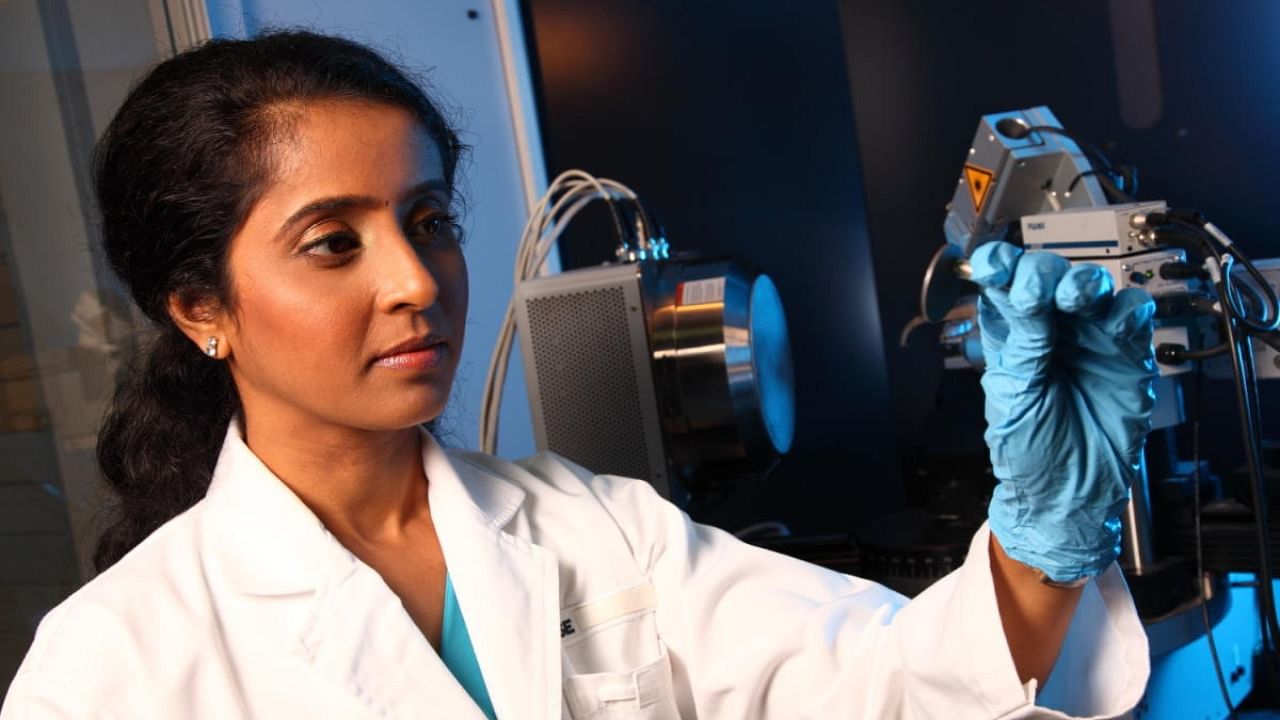
India can play a bigger role in supplying green hydrogen and developing electric vehicle batteries that work better in Southeast Asia, according to Prof Madhavi Srinivasan, Executive Director of Sustainability Office at the Nanyang Technological University in Singapore.
The IIT-Madras alumna, whose research focuses on energy storage and recycling of e-waste and spent lithium-ion batteries (LIBs), sat down with DH ’s R Krishnakumar on the sidelines of a recent NTU Singapore - India dialogue in Bengaluru.
In a wide-ranging interview, she shared her thoughts on India’s renewable energy roadmap, its electric vehicle adoption goals, battery management challenges and potential tech partnerships. Edited excerpts:
India targets 50 per cent of its installed power capacity from non-fossil fuel energy sources by 2030. What do you see as key in the run-up to this goal?
On a broader statement level, it’s all hands on deck. From technology to policy to people adoption – all these have to align. Setting goals is a good first step. In terms of reaching the targets, the number of available technologies is limited. You can only place so many solar panels. How do you go to the next level? That is the context for adopting emerging technologies, that is where we talk about multi grids and other forms of renewables.
India has also set ambitious timelines for scaling up of green hydrogen production.
India’s aspiration is reasonable; it can play a big part in hydrogen supply to the region. In terms of energy technology, some of the challenges that we see are regional. Take Southeast Asia, with its hot and humid conditions. When a battery produced in Europe or the US is adopted in electric vehicles in these conditions, the degradation is faster. Countries like India can play a big part here because they understand the local ecosystem and can tailor solutions to the regional context.
The policy shift toward EVs has made headway but cities like Bengaluru also face unique challenges including lack of space to set up charging infrastructure. Are the vision and action in alignment?
They are getting aligned. In India, the EV market is in the nascent phase. Electrification will be key in cutting down carbon emission, but it’s not an easy road when there are questions about infrastructure and space. These are the right questions which I think will be answered, eventually. Two-wheeler electrification itself will create a huge difference in carbon emission.
How do you see the problems in battery waste management affect plans for a circular economy involving LIBs?
Battery management technologies are evolving. In research, a lot of AI and ML is going into battery management systems which, probably, did not happen 10 years ago. These are getting adopted in a lot of EVs which is the right direction to go. About LIB waste recycling, this is one loop that has not been closed. If we close it, this well-to-wheels of EV adoption would make more sense for sustainability and carbon emissions.
What made you experiment with fruit-peel waste to recycle spent LIBs two years back?
Incineration is highly energy-intensive and involves huge capital costs. The other option was to use strong acids but it had to make economic sense. That’s when we mooted using one form of waste to treat another waste stream. We narrowed down on orange peels because of their acidity; we mixed the peels with battery waste and found that the peels were able to extract more than 95 per cent of the critical elements – lithium, nickel, cobalt and manganese. After we recover these elements, we try to put them back into making new batteries and test them. We are trying to test-bed this technology with a Singapore company.
We have seen NTU partner with policymakers and industry for climate action. How viable are similar models in India?
(In the Singapore model), the government sets the overarching themes of the national agenda and the industry provides the problem statements that give our universities a context. With India, these problem statements might be a bit different. I think here, the focus is more on low-cost solutions, on ready adoption, than on basic research. In terms of translational research, I think the industries are aligning with universities here. These are models that would work here, with some tuning on the objectives.
What are the possibilities for innovators from India to test-bed their technologies in Singapore, including in NTU?
India and Singapore can complement each other in areas including research and innovation. Singapore, for India, presents a good mix of the east and the west. Deliberations involving industry partners, like these in Bengaluru, are part of efforts to build collaborations covering education, research, innovation and entrepreneurship.